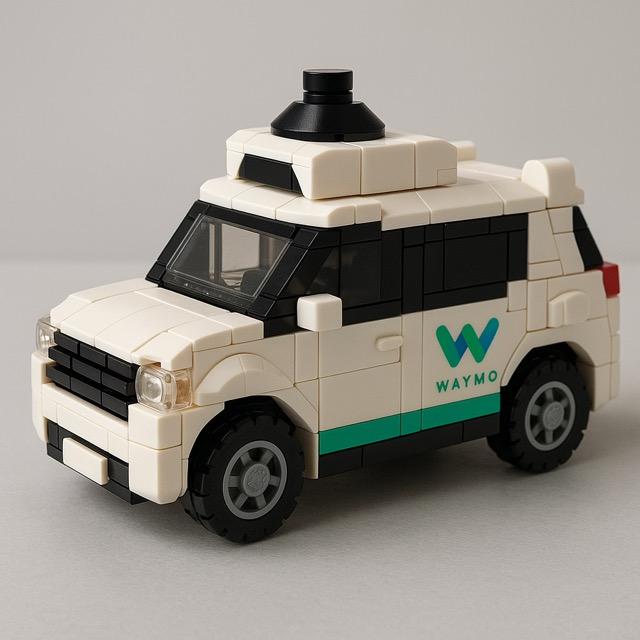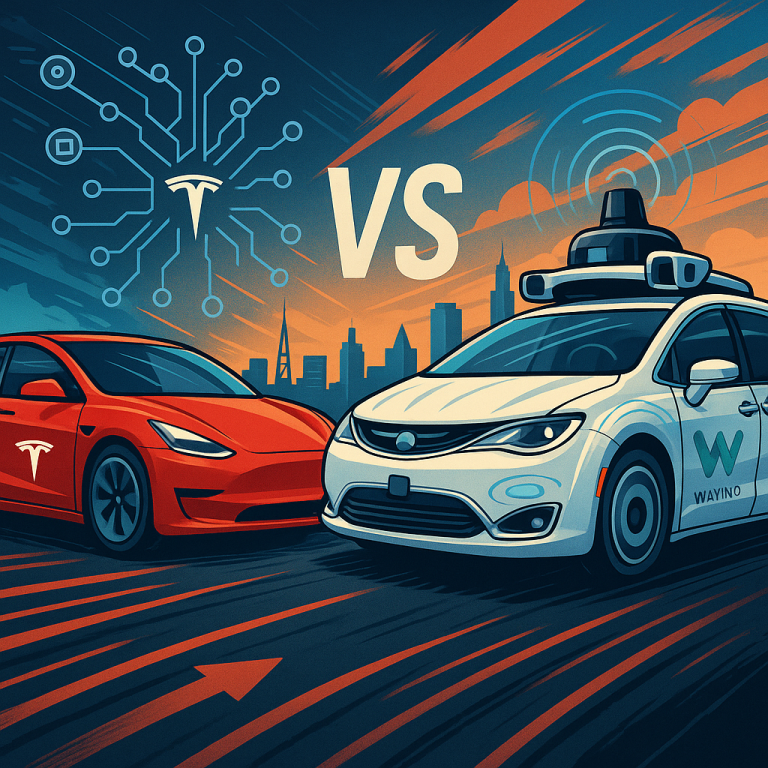The Road to Autonomy: Modeling Waymo’s Revenue Trajectory (2026-2028)
The autonomous vehicle (AV) landscape is rapidly shifting from a high-R&D endeavor to a commercial reality. As we move through the final quarter of 2025, Alphabet’s (GOOGL) Waymo has established a commanding lead in the US robotaxi market. With the technology proving viable and the initial phases of commercialization successful, the critical question for investors is no longer “if” Waymo will generate significant revenue, but “how quickly” it can scale.
Currently, Waymo is providing over 250,000 paid trips weekly across four major metropolitan areas: Phoenix, San Francisco, Los Angeles, and Austin. This volume, serviced by a fleet that recently surpassed 2,000 vehicles, demonstrates significant market demand and impressive operational efficiency.
The next three years (2026-2028) are key. This period will see Waymo transition from large-scale pilot projects to a massively used mobility service. This analysis will explore Waymo’s growth strategy, the bottlenecks to expansion, and project potential revenue scenarios as the company accelerates its deployment.
The Twin Engines of Growth: Manufacturing and Geography
For years, the primary constraint on Waymo’s growth has been vehicle availability and the intensive process of mapping and validating new markets. Both constraints are rapidly easing.
1. The Manufacturing Bottleneck Opens
Waymo’s reliance on retrofitted Jaguar I-PACEs provided a foundation, but these cars were not designed for the scale required to disrupt the mobility market.
This changed significantly with the opening of Waymo’s new 239,000-square-foot vehicle integration plant in Mesa, Arizona, managed in partnership with automotive supplier Magna. This facility is a game-changer. While it is currently finalizing an order for 2,000 additional I-PACE vehicles through 2026, its true purpose is scaling the next generation of AVs.
The facility is designed to integrate the 6th-generation Waymo Driver onto new platforms, most notably the purpose-built Zeekr RT (The Zeekr RT is the world’s first mass-produced, purpose-built robotaxi, designed in partnership with Waymo for future ride-hailing services). When operating at full capacity, Waymo states this plant can produce “tens of thousands” of autonomous vehicles annually. The speed of this manufacturing ramp-up is the single most crucial variable in Waymo’s growth trajectory.
2. Accelerating Geographic Expansion
Waymo’s geographic expansion is gaining momentum. The company has confirmed that Atlanta, Miami, Washington D.C., and Dallas will launch Waymo One services in 2026. Exploratory phases are also underway in Denver and Seattle.
The “Waymo Driver” AI is becoming increasingly generalizable, allowing the company to enter new cities faster. Analysts predict a steady cadence of new market entries. Morgan Stanley forecasts Waymo adding three cities in 2026, four in 2027, and five in 2028. A more aggressive analysis by Wells Fargo suggests Waymo aims to enter 17 new markets by 2027, potentially covering 57% of the US rideshare demand by the end of the decade.
Analyzing the Numbers: Revenue Scenarios 2026-2028
To project Waymo’s revenue potential, we must establish baseline assumptions based on current operations (September 2025):
- Current Fleet: ~2,000 vehicles
- Weekly Trips: ~250,000
- Current Utilization Rate: Approximately 17.8 trips per vehicle per day (TPD). This indicates high efficiency in current markets. (250,000 trips / 7 days / 2,000 vehicles).
- Average Revenue per Trip (ARPT): Estimated at $18 (competitive with current Uber/Lyft pricing).
- Current Annual Revenue Run Rate: ~$234 million.
We present three scenarios for the next three years, varying the speed of manufacturing ramp-up and market deployment. For these scenarios, we assume a sustainable long-term utilization rate of 16 TPD. This accounts for high performance in mature markets while factoring in lower initial utilization in newly launched cities and vehicle downtime.
Scenario 1: Conservative Growth (The Measured Approach)
This scenario assumes a slower manufacturing ramp-up, prioritizing the completion of the I-PACE orders with a gradual introduction of the Zeekr platform. It also factors in potential regulatory headwinds and delays in new market launches.
- Fleet Size (End of Year): 2026: 5,000; 2027: 9,000; 2028: 15,000.
- Projected Revenue (16 TPD, $18 Fare):
- 2026: $526 million
- 2027: $946 million
- 2028: $1.58 billion
In this scenario, Waymo solidifies its position as a billion-dollar business by 2028, demonstrating steady growth but perhaps not yet reaching the “disruptive” scale anticipated by some investors. This aligns closely with Morgan Stanley’s conservative view of $2.5 billion in revenue by 2030.
Scenario 2: Moderate Growth (The Market Penetration View)
This moderate scenario assumes Waymo effectively utilizes its new manufacturing capacity and successfully launches the confirmed 2026 cities, followed by an average of 4-5 new cities in the subsequent years. It represents a balanced view of scaling challenges and market opportunities.
- Fleet Size (End of Year): 2026: 7,000; 2027: 18,000; 2028: 35,000.
- Projected Revenue (16 TPD, $18 Fare):
- 2026: $736 million
- 2027: $1.89 billion
- 2028: $3.68 billion
This trajectory positions Waymo as a significant competitor in the US ride-hailing market, beginning to materially impact the market share of incumbents like Uber and Lyft in key cities.
Scenario 3: Aggressive Growth (The Exponential Adoption View)
The aggressive scenario assumes that manufacturing rapidly approaches the “tens of thousands” capacity by late 2027. It also assumes Waymo’s technological superiority leads to rapid public adoption and faster regulatory approvals, allowing for accelerated city launches.
- Fleet Size (End of Year): 2026: 10,000; 2027: 30,000; 2028: 65,000.
- Projected Revenue (16 TPD, $18 Fare):
- 2026: $1.05 billion
- 2027: $3.15 billion
- 2028: $6.83 billion
Achieving this level of growth would fundamentally reshape urban transportation. A near $7 billion revenue stream by 2028 would validate the massive investment Alphabet has made and likely force a significant re-evaluation of Waymo’s contribution to Alphabet’s overall valuation.
Headwinds: Regulation and Unit Economics
While the potential is vast—the global robotaxi market is expected to grow at a CAGR of 70-90% through 2030—Waymo’s growth is not guaranteed.
The primary obstacle remains the patchwork of state and local regulations. Navigating local politics and ensuring community acceptance will be crucial for expansion. Maintaining public trust is paramount; any significant safety incident can draw intense scrutiny and slow down deployment.
Furthermore, the path to profitability hinges on unit economics. The upfront cost of a Waymo vehicle is substantial. While high utilization helps amortize this cost, achieving fleet-wide profitability requires the lower hardware costs promised by the 6th-generation system and the Zeekr platform, combined with efficient fleet management (maintenance, charging, and remote assistance). Partnerships with firms like Avis for fleet management in new cities like Dallas will be critical for optimizing these costs.
Conclusion: The Road Ahead
Waymo is entering a critical phase of hyper-scaling. With the manufacturing infrastructure in place and a clear technological lead, the period between 2026 and 2028 will be transformative. While conservative estimates suggest a $1.5 billion business by 2028, the potential exists for exponential growth, potentially exceeding $6.8 billion if manufacturing capacity and deployment align. Investors should closely monitor fleet size announcements and the pace of new city launches as key indicators of which trajectory Waymo is following. The robotaxi race is well underway, and Waymo is firmly in the driver’s seat.
Disclaimer
The various scenarios (Conservative, Moderate, Aggressive) presented are hypothetical and are provided for illustrative purposes only. They are not guaranteed outcomes. This analysis is for informational purposes only and should not be construed as investment advice, a recommendation to buy or sell any securities, or a solicitation of any offer. Readers should perform their own due diligence and consult with a qualified financial advisor before making any investment decisions.




